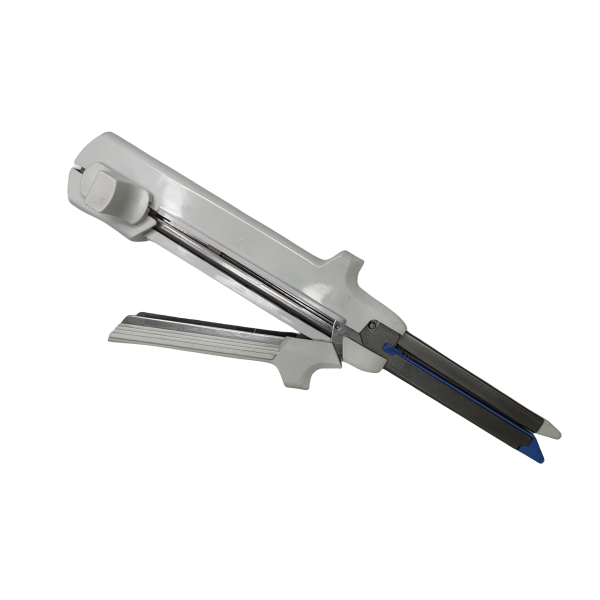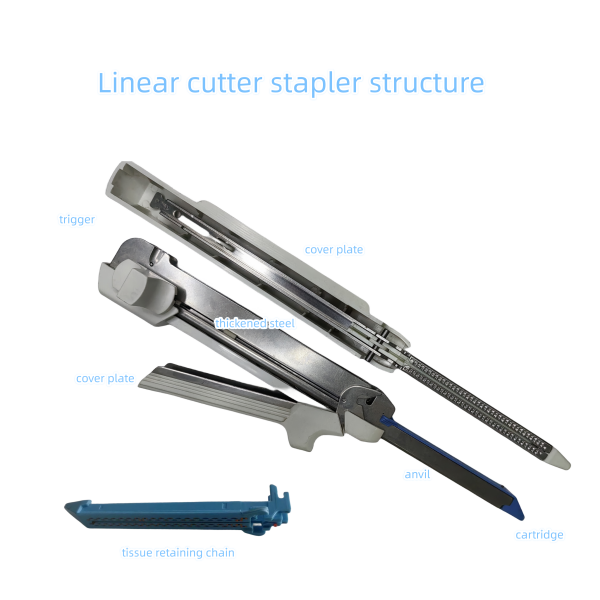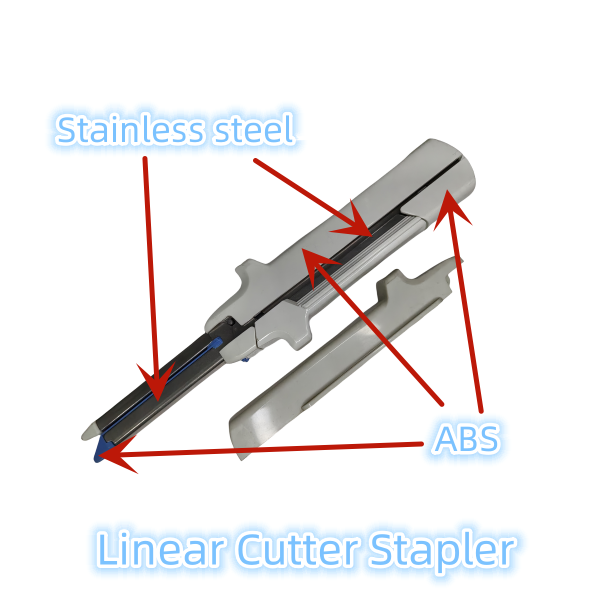
Linear cutter staplers are indispensable tools in modern surgical procedures. They simplify the process of tissue closure, making surgeries more efficient and reducing patient recovery times. One crucial element that enables these devices to function optimally is the use of plastic parts. In this article, we will delve into the significance of plastic components in linear cutter staplers, exploring their types, advantages, challenges, and the role they play in the staple formation process.
KYLT provides full set of plastic parts & injection molds services for linear cutter stapler according to customers' drawings or samples. We have over 15years experience in the medical useage plastic parts molds making and manufacturing.
More detail information about plastic injection molds & molding parts of linear cutter stapler, please contact us: cnkylt@aliyun.com
Plastic Components in Linear Cutter Staplers
A linear cutter stapler is a surgical instrument used in medical procedures to both staple and cut tissues. The device typically contains various plastic components that serve different functions. Here are some common plastic parts you might find in a linear cutter stapler:
-
Handle Grips: The handles of the stapler often have plastic grips to make them easy to hold and control during surgery.
-
Safety Locks and Mechanisms: Many linear cutter staplers feature safety mechanisms and locks made of plastic that help prevent accidental firing of the staples.
-
Alignment Guides: Plastic alignment guides ensure proper alignment of tissues to be stapled and cut, promoting precision during surgery.
-
Staple Cartridge Housing: The housing for the staple cartridge is usually made of plastic. This component holds the staples and can be easily replaced when the cartridge is empty.
-
Firing Mechanism: Some parts of the firing mechanism, like triggers and levers, may contain plastic components that are essential for the proper functioning of the stapler.
-
Sight Line and Cutting Blade Guard: The sight line and the guard for the cutting blade are often made from plastic to allow the surgeon to visualize the tissue and ensure safety during cutting.
-
Depth Adjustment Knobs: In adjustable staplers, plastic knobs are used to set the depth of staple penetration into tissues.
-
Tissue Clamp and Anvil: The jaws that clamp the tissue and the anvil that supports the tissue on the opposite side may incorporate plastic components for smooth operation.
-
Staple Counters: Some staplers have plastic components that count and display the number of staples used in a procedure.
-
Disposable Covers and Sterile Packaging: While not a permanent part of the stapler, plastic covers are often used to maintain sterility. These are typically disposable and designed to be easily removed before surgery.

Types of Plastic Used
Various types of plastics are used in the construction of linear cutter staplers. Polymers like polycarbonate, polypropylene, and acetal are commonly selected due to their high strength, rigidity, and biocompatibility. These plastics ensure that the devices are safe for medical use and can withstand the rigors of surgery.

ABS material used in the manufacturing of linear cutter stapler parts. KYLT provides full set of plastic parts & injection molds services for linear cutter stapler according to customers' drawings or samples.
More detail information about plastic injection molds & molding parts of linear cutter stapler, please contact us: cnkylt@aliyun.com
Advantages of Plastic Parts
Plastic components offer several advantages in linear cutter staplers. They are cost-effective, which is significant in the healthcare industry. Additionally, plastics are lightweight, reducing the overall weight of the device and making it more manageable for surgeons. Moreover, plastic parts are durable and resistant to corrosion, ensuring the long-term reliability of these instruments.
Challenges Faced by Plastic Components
Despite their numerous advantages, plastic components face challenges. They may be susceptible to wear and tear, especially in high-stress areas. Moreover, sterilization methods can affect the integrity of some plastics. Manufacturers must address these issues to maintain the quality of their products.
Role of Plastic in Staple Formation
Plastic parts play a pivotal role in the staple formation process. They guide the surgical staples to ensure precise closure of tissue, a critical aspect of surgical success.
Impact on Performance
The quality of plastic components significantly impacts the overall performance of linear cutter staplers. High-quality plastics enhance the devices' reliability and contribute to successful surgeries, while subpar materials may result in complications.
Environmental Considerations
The use of plastics in medical devices raises environmental concerns. Manufacturers are exploring eco-friendly plastics and recycling programs to minimize the environmental footprint of these essential medical instruments.
Innovations and Future Trends
In recent years, there have been notable innovations in plastic parts for linear cutter staplers. Enhanced materials and designs are continually being developed to improve device performance. As technology advances, we can expect further innovations and the integration of smart materials into these instruments.
Plastic vs. Alternative Materials
Comparing plastics to alternative materials, such as metals or composites, reveals that plastic components often provide a better balance of cost, weight, and functionality. However, the choice of materials should align with the specific requirements of each surgical application.
Regulations and Standards
Stringent regulatory guidelines and industry standards are in place to ensure the safety and efficacy of plastic components in medical devices. Compliance with these standards is crucial for manufacturers and healthcare providers.
Importance of Quality Control
Quality control in the manufacturing process of plastic parts for medical instruments is paramount. It ensures that these components meet the highest standards of precision, durability, and safety.
Conclusion
In conclusion, plastic components are vital to the success of linear cutter staplers. Their lightweight, durable, and cost-effective nature makes them the preferred choice in modern surgical instruments. However, maintaining their quality and addressing potential challenges is essential for the continued improvement of these devices.
KYLT provides full set of plastic parts & injection molds services for linear cutter stapler according to customers' drawings or samples. We have over 15years experience in the medical useage plastic parts molds making and manufacturing. More detail information about plastic injection molds & molding parts of linear cutter stapler, please contact us: cnkylt@aliyun.com
FAQs
FAQ 1: Are plastic components safe for medical use in surgical instruments?
Yes, plastic components in surgical instruments are carefully selected for their biocompatibility and safety in medical applications.
FAQ 2: How do plastics affect the cost of linear cutter staplers?
Plastics contribute to cost-effectiveness by reducing the manufacturing expenses, making these devices more affordable for healthcare facilities.
FAQ 3: What are the environmental concerns associated with plastic parts in medical devices?
The disposal of plastic parts is an environmental concern, but manufacturers are working on eco-friendly solutions and recycling programs.
FAQ 4: Can plastic components be recycled in the healthcare industry?
Yes, recycling programs for medical plastics are being developed to minimize waste and environmental impact.
FAQ 5: What are the latest innovations in plastic components for linear cutter staplers?
The latest innovations include improved materials and designs, as well as the incorporation of smart materials to enhance device performance.



